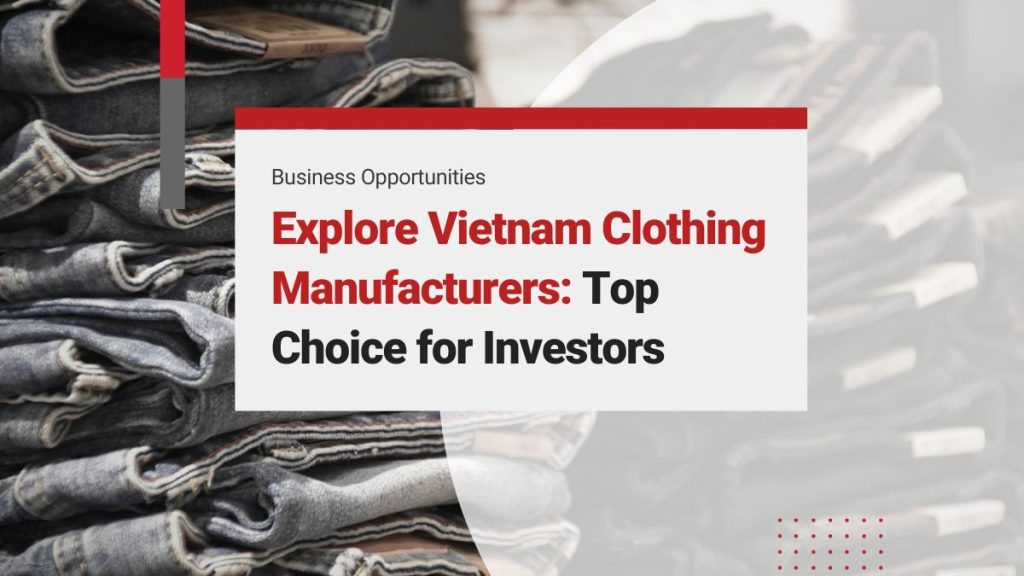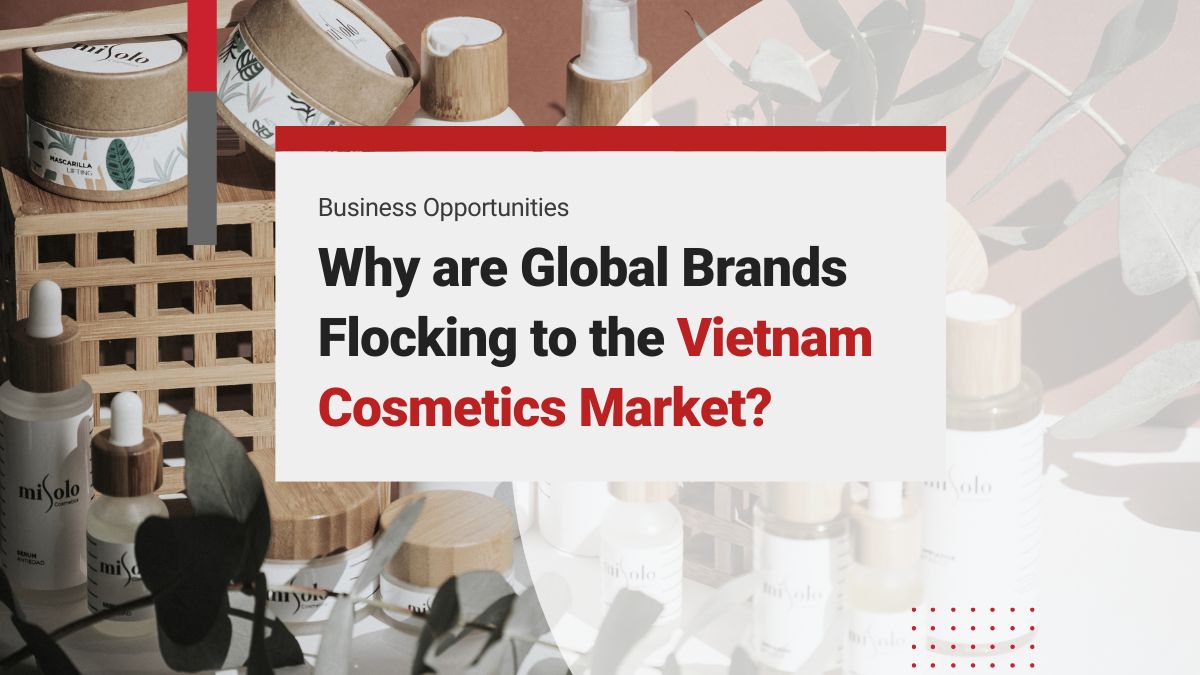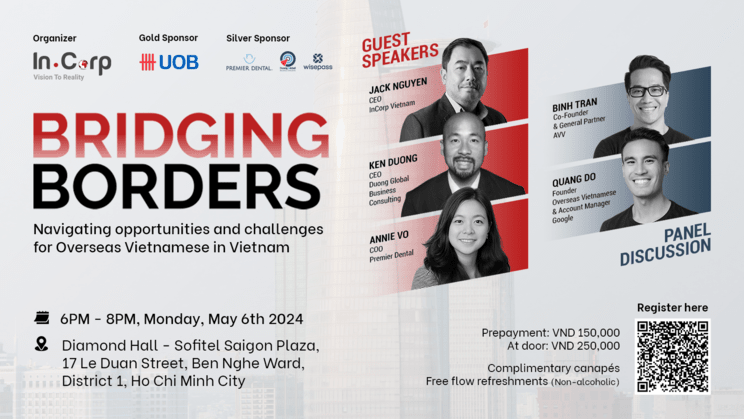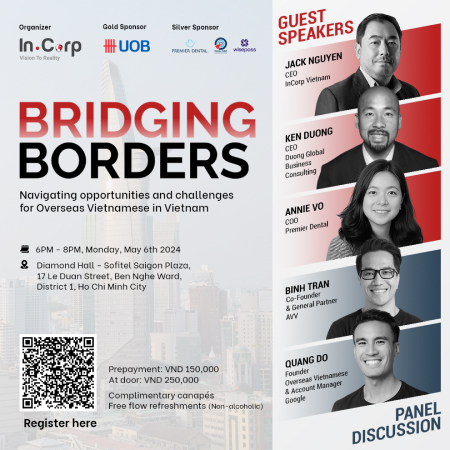Renowned for its textile craftsmanship, Vietnam’s strategic location, cost-effective labor, and tech-driven approach make it a preferred hub for garment production. Among the key players, Vietnam clothing manufacturers have emerged as leaders in global garment exports. Notable fashion brands such as H&M, The North Face, and ZARA have recognized and tapped into the manufacturing excellence offered by this country.
With over 6000 manufacturers and 2.4 million workers in textiles and garments, Vietnam holds a 12-30% market share. The commitment to sustainability drives the garment and textile industry towards sustained expansion, with record-high exports projected in 2022.
Interested in Clothing Manufacturing in Vietnam? Check out InCorp Vietnam’s Manufacturing Incorporation Services
Overview of the Vietnam Clothing Industry
In 2022, Vietnam’s textile and garment exports surged to approximately US$44 billion. This notable 14.7% year-on-year increase solidified its position as a formidable global garment exporter. The garment and textile industry’s resilience amidst challenges, including the COVID-19 pandemic, was evident in the surge in export value.
However, the start of 2023 brought headwinds as exports dipped by 19.6% in January and February, reaching US$4.548 billion. This decline raised doubts about sustaining growth momentum amidst evolving market movements.
Vietnam’s apparel industry is booming. It is also projected to generate a revenue of US$6.71 billion by 2024. Herein, we present a curated overview of market insights for prospective investors assessing the viability of Singapore’s clothing industry.
- This market is expected to grow annually by 3.73% (CAGR 2024-2027).
- The largest segment in this market is women’s apparel, which is estimated to have a market volume of US$3.39 billion by 2024.
- Compared to other countries, the United States generates the highest revenue in the apparel market, amounting to US$359 billion by 2024.
- On a per capita basis, Vietnam is projected to generate revenues of US$67.43 per person by 2024.
- The volume of the Apparel market is expected to reach 1.4 billion pieces by 2027.
- Additionally, the market is anticipated to experience a volume growth of 2.8% in 2025.
- Non-luxury items are expected to account for 97% of sales in the apparel market by 2024.
- Vietnam’s apparel market is booming, with many international brands setting up production facilities there.
Reasons to Choose Vietnam for Clothing Manufacturing
After becoming a WTO member in 2007, Vietnam entered into various bilateral and multilateral agreements with nations like Japan, South Korea, and the European Union. These agreements have enabled Vietnam’s textiles to enjoy a “Zero Tariff” policy for export in numerous countries.
Apart from that, there are several other reasons to choose this country to grow the textile industry.
Inexpensive Labor Cost
Vietnam’s competitive labor costs stand out as a key attraction for businesses. As per the report, in 2023, average monthly wages hovered around US$251, with major cities like Ho Chi Minh City and Hanoi offering the highest rates. These figures notably fall below the US$250 to US$346 range observed in China.
Moreover, signs indicate stability in Vietnam’s minimum wage growth trajectory. Unlike the 6.5% increases seen in 2018 and 2017, minimum wages experienced an average rise of 5.3% in 2019 and 6% in 2022.
Promising Business Environment
Joining free trade agreements has enabled Vietnam to foster integration and economic development. As a result, Vietnam apparel manufacturers have found favorable conditions to expand their export scale into other markets.
- EU-Vietnam Free Trade Agreement (EVFTA): This agreement facilitates cooperation between Vietnam’s clothing manufacturers and buyers in the European market. It enables European businesses and investors to establish production operations in Vietnam with minimal restrictions, fostering economic collaboration.
- CPTTTP (Comprehensive and Progressive Agreement for Trans-Pacific Partnership): The agreement will enable Vietnam to engage in free trade with 13 countries, including Canada, Australia, Brunei, Chile, Japan, Malaysia, Mexico, New Zealand, Peru, and Singapore
Other trade agreements signed by Vietnam are listed below:
- UK – Vietnam Free Trade Agreement (UKVFTA)
- The U.S. – Vietnam Bilateral Trade Agreement (BTA)
- ASEAN Free Trade Area (AFTA)
- ASEAN – China Free Trade Agreement (ACFTA)
- ASEAN – Australia – New Zealand FTA (AANZFTA)
- Vietnam – South Korea Free Trade Agreement (VKFTA)
- Japan – Viet Nam Economic Partnership Agreement (VJEPA)
- ASEAN – India Free Trade Area (AIFTA)
- Vietnam – Eurasian Economic Union Free Trade Agreement (VN-EAEU FTA)
- Regional Comprehensive Economic Partnership (RCEP)
- Vietnam – Cuba Trade Agreement
- Vietnam – Chile Free Trade Agreement (VCFTA)
- ASEAN – Hong Kong, China Free Trade Agreement (AHKFTA)
- Vietnam – Israel Free Trade Agreement (VIFTA)
Read More: Guide to Vietnam’s 16 Active Free Trade Agreements
High-Quality Clothes at Reasonable Price
Vietnam offers a more accommodating environment with fewer regulations on materials and manufacturing methods. As a result, Vietnamese garment manufacturers can closely adhere to diverse design requirements.
Vietnam’s textile industry ranks among the top 90% globally for finished goods quality, driven by continuous technological advancements and adherence to international standards. This allows factories to produce various items with exceptional quality and reasonable prices.
Less Production Time
Vietnam’s clothing manufacturers excel in Speed To Market, ensuring rapid production to retail transition. This efficiency enables them to meet high demand promptly.
Major clothing suppliers such as Spencer and UNIQLO have forged partnerships with Vietnamese manufacturers to produce large quantities of garments swiftly. With their rapid and quality-driven production processes, manufacturers consistently fulfill diverse clothing orders.
Their capacity and resources allow for the seamless handling of substantial clothing volumes. It makes them preferred partners for renowned suppliers seeking timely and abundant garment production.
Political Stability
Vietnam, governed by the Communist Party of Vietnam (CPV), maintains stability through strategic policies. Amid Southeast Asia’s political and economic volatility, this country stands out for its political steadiness. This stability attracts significant investment, particularly in manufacturing sectors like clothing.
Unlike neighboring nations like Thailand, Vietnam experiences fewer large-scale protests and disturbances, which can be attributed to robust government control.
24/7 Customer Support
Vietnamese manufacturers excel in English proficiency, offering valuable insights and guidance throughout production. Their 24/7 customer service provides continuous support, whereas many industries operate only during office hours. This accessibility enables timely adjustments to designs and ensures precise fulfillment of requirements.
Moreover, continuous contact facilitates the exchange of fabric choices, methods, and pattern ideas, deepening understanding of manufacturing intricacies and inspiring innovative product enhancements. Vietnam’s commitment to seamless communication empowers clients to optimize their garment production experience.
Choosing Tax-Free Manufacturing Zones to Set Up Factories
In Vietnam, substantial industrial zones, vital hubs for diverse industries, are integral to the country’s manufacturing landscape. Among these, prominent names include
- VSIP (Vietnam-Singapore Industrial Park)
- HPIP (Hiep Phuoc Industrial Park)
- PDIP (Phuoc Dong Industrial Park)
- The Economic Zone of Dinh Vu-Cat Hai
Read Related: Setting up a Manufacturing & Trading Business in Vietnam’s Free Zones: A Brief Guide for Foreigners
Profit From Tax Breaks
- Businesses can enjoy a reduced Corporate Income Tax (CIT) rate of 10% for 15 years.
- Both foreign and local employees are eligible for a 50% discount on Personal Income Tax (PIT).
- Approved projects are exempt from corporate income tax for up to 4 years.
Read More: A Complete Guide to Tax Incentives in Vietnam for Foreign Companies
Additional Incentives
- High-technology projects can receive a 10% decrease in income tax rates for up to 30 years.
- Social projects, encompassing health and education sectors, qualify for a 10% reduction in overall taxes.
- Items imported, produced, or processed within industrial zones are exempt from Value-Added Tax (VAT) and excise duty.
- Raw materials imported for manufacturing within Vietnam’s industrial zones are eligible for a 5-year tax break.
Other Advantages
- Companies trading goods in the ASEAN regions qualify for tariff reductions.
- The government supports and aids infrastructure development for the regions with poor socioeconomic conditions.
- Companies can access preferential funding from the government and may be exempt from land leasing costs.
List of Vietnam Clothing Factories
Below is a list of the best Vietnam clothing factories:
- Dugarco Textile and Garment Company
- Thygesen Textile Vietnam
- G&G II Vietnam Garment Factory
- Thai Son S.P Sewing Factory
- DONY GARMENT Company
- Inflow
- Yoke Apparel Manufacturing
- March 29 Textile Joint Stock Company
- Albetta
- TAL Apparel Limited
- Fashion Garments (FGL)
- ICM Factory Direct
Apart from these, some other textile factories in Vietnam specialize in various clothing products. Below is a sample list of factories in Vietnam as per categorization.
| T-Shirt Factories | Shoe Factories | Backpack Factories | Baseball Cap Factories | Outwear Factoris |
| GINKGO | INNOLUX FOOTWEAR | AB HANDBAGS | YU POONG | MAX PORT |
| UN-AVAILABLE | AN BA | HOP PHAT | SUNSHINE | INTERMAX |
| AO THUN | THIEN HUONG | DOMINGO | TAN THANH DAT | VIKING |
Some Clothing Brands Made in Vietnam
Being one of the largest clothing manufacturers worldwide, virtually every major brand has manufacturing operations in Vietnam. It includes:
- MANGO
- C & ONE
- Calvin Klein
- Decathlon
- Colombia
- Walmart
- GAP
- Marks & Spencer
- Target
- JCPenney
- Children’s Place
- Patagonia
- Under Armour
- The North Face
- Super dry
- Levi’s
- Lacoste
- Reverse
- Hurdles
- Jordan
- Esprit
- Nike
- P.V.H.
Selecting the Ideal Garment Manufacturer in Vietnam: Key Considerations
When choosing a clothing manufacturer, remember the key criteria for finding one that ensures quality quickly. Here is a list:
- Do Market Research Thoroughly: Take the time to research different clothing manufacturers in Vietnam. Check feedback, ratings, and reviews from previous clients. Explore their website, social media channels, and online listings to gauge their services, products, and pricing.
- Know the advantages of foreign and domestic manufacturers so that businesses can understand the different perspectives of these businesses. Each option presents distinct advantages and disadvantages.
- Find the manufacturer in the exhibition: Trade shows are ideal for discovering Vietnamese clothing manufacturers. These events bring together a myriad of large and small garment companies, both local and international. It will allow investors to network, establish connections, and foster mutually beneficial business relationships.
- Experience in Production: Look for manufacturers boasting a proven track record and garnering positive feedback from fellow business owners. Manufacturers with extensive experience tend to possess a keen eye for fabrics and materials, resulting in high-quality products.
- Check Price and Product Quality: Businesses must select a manufacturer capable of offering top-quality items within their current business budget constraints. Dividing costs among items facilitates budget allocation without surpassing the initial amount.
- Delivery Time: With Vietnamese clothing manufacturers or overseas factories, domestic shipping tends to be notably faster. This efficiency saves time and allows consolidation of multiple deliveries into a single shipment, streamlining logistical processes.
- Join online groups: Connect with clothing manufacturers and business owners. Many online forums can help businesses communicate with experienced clothing brands and learn the ordering process, product quality, and other considerations.
Conclusion
In summary, Vietnam’s clothing manufacturers sector is a compelling destination for global investors and brands, driven by its commitment to quality, innovative practices, and competitive advantages in cost and skill. The nation’s strategic position in the apparel production industry is underpinned by strong governmental support, thriving export markets, and a dynamic workforce, marking it as a fertile ground for investment and collaboration. As the industry evolves, embracing sustainability and technological advancements, Vietnam is poised to lead in the global fashion and textile market, offering vast opportunities for those ready to engage with this dynamic manufacturing hub.
About Us
InCorp Vietnam is a leading market entry and corporate services firm in Vietnam. We are part of InCorp Group, a regional leader in corporate solutions that encompasses 8 countries in Asia-Pacific, headquartered in Singapore. With over 1,200 legal experts serving over 15,000 Corporate Clients across the region, our expertise speaks for itself. We provide transparent legal consulting, setup, and advice based on local requirements to make your business fit into the market perfectly with healthy growth.
Don’t take our word for it. Read some reviews from some of our clients.









